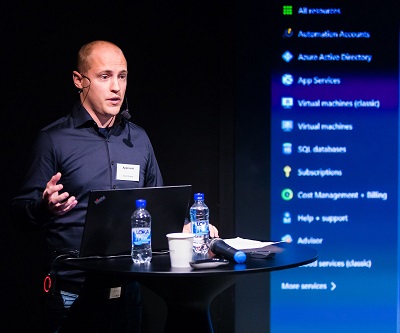Update Rollup 2 for System Center 2016 Operations Manager
So the time has come for the second update rollup of this generation of System Center 2016 Operations Manager to be released. Microsoft made it available today through the update catalog for us to download it. I have been waiting for this update for a while now since Update Rollup 2 for System Center 2016 has been partially release over the past few weeks. The update rollup solves the following issues
- When you use the Unix Process Monitoring Template wizard (adding a new template) to monitor processes on UNIX servers, the monitored data is not inserted into the database because of the following failure:
Log Name: Operations Manager Source: Health Service Modules Date: Event ID: 10801 Task Category: None Level: Error Keywords: Classic User: N/A Computer: Description: Discovery data couldn’t be inserted to the database. This could have happened because of one of the following reasons: - Discovery data is stale. The discovery data is generated by an MP recently deleted. - Database connectivity problems or database running out of space. - Discovery data received is not valid.
- When a management server is removed from the All Management Servers Resource Pool, the monitoring host process does not update the TypeSpaceCache.
- When alerts are closed from the Alerts view after you run a Search, the closed Alerts still appear in the View when the Search is cleared.
- When you press Ctrl+C to copy an alert in Operations Manager Alert view and then press Ctrl+V to paste it to Notepad, the Created time is in UTC time, not local time.
- Groups disappear from Group view after they are added to a Distributed Application.
- IM notifications from Operating Manager to Skype fail when an incorrect exception causes NullReferenceException in the method.
- When the maintenance mode option for the dependency monitor is set to “Ignore,” and the group (consisting of the server to which this dependency monitor is targeted) is put in Maintenance mode, the state of the monitor changes to _critical_and does not ignore maintenance mode.
- Because of a rare scenario of incorrect computation of configuration and overrides, some managed entities may go into an unmonitored state. This behavior is accompanied by 1215 events that are written to the Operations Manager log.
- Recovery tasks on “Computer Not Reachable” Operations Manager Monitor generate failed logons on SCOM Agents that are not part of the same domain as the management groups.
- The ManagementGroupCollectionAlertsCountRule workflow fails and generates a “Power Shell Script failed to run” alert.
- Get-SCOMGroup cmdlet fails when thousands of groups are created in Operations Manager.
- Organizational unit properties for computers that are running Windows are not discovered or populated. This discovery is part of the System Center Internal Library MP. After this update, organizational unit properties will be discovered for all computers that are running Windows.
- When the Operations Manager Health Service agent starts, and the agent is configured for AD integration, if the agent cannot contact Active Directory at all, it immediately goes dormant and stops trying to connect and obtain the policy from Active Directory.
Issues that are fixed in the UNIX and Linux management packs
- SHA1 is deprecated, and SHA256 certificates are now supported on the management server that’s used to sign the Unix/Linux OMI certificate.
- OMI does not work on Linux servers configured for FIPS compliance.
- Physical disk sec/transfer performance counters are not displayed for Hewlett Packard computers.
- OMI displays incorrect Memory information on Solaris 10 computers.
- Network adapter performance is not displayed for SLES 12 x64 platform in the Operations Manager Console.
- Cannot discover file systems on HPUX 11.31 IA-64 computers with more than 128 disks. Previously it supported only 128 VGs. Now support is extended to 256 VGs.
- Deep monitoring cannot be started successfully on some JBoss applications because the discovery of the JBoss application server sets the Disk Path for the JBoss server incorrectly. Deep monitoring was not being started in JBoss stand-alone mode when a nondefault configuration was used.
Find the support article here and download the update from the update catalog here.
If you want to find information on the other products of the System Center suite and the Update Rollup 2, you can find that here.

Comments